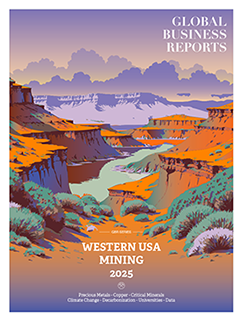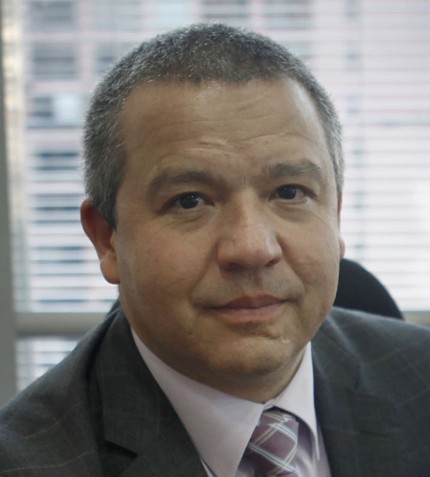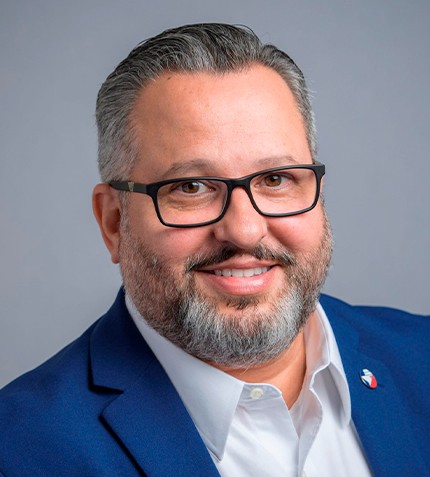
"We have an unprecedented opportunity that is not open-ended to strengthen the mining industry in the US, and we must strike while the iron is hot."
RELATED PUBLICATION
Mark Compton
EXECUTIVE DIRECTOR, AMERICAN EXPLORATION & MINING ASSOCIATION (AEMA)
Is AEMA seeing more political support for domestic mineral production? What key projects are moving forward?
Policymakers on both sides of the aisle recognize the importance of secure mineral supply chains to our economic and national security, so we are seeing more bipartisan support for mining in Congress than we have had in years. We also now have an executive branch that is openly supportive of domestic resource development, and we are working closely with the Trump administration and Congress to take advantage of what we believe are some truly unprecedented opportunities to strengthen the U.S. mining industry.
Two notable examples are Resolution Copper, which is moving forward with its final Record of Decision from the Forest Service, and South32's Hermosa project, the first mining project to be placed on the FAST-41 priority permitting list. By demonstrating that we can more efficiently permit mining projects while adhering to strong environmental standards, that kind of momentum could really snowball and help streamline permitting across the industry.
How do you view the role and impact of the National Energy Dominance Council?
The fact is that nearly every federal department or agency has some hand in the mining universe. For too long, however, those roles have not been coordinated. That is why we have been strongly advocating for a high-level entity at the White House level – the equivalent to a “Minister of Mines” or someone who can pull all those pieces together and ensure everyone is moving in the same direction to secure our mineral supply chains. I believe the National Energy Dominance Council, with its laser focus on revitalizing the domestic mining industry, is a significant step forward and provides a strong framework to achieve that goal.
Can you tell us about any recent legislative wins for the industry?
There is a growing recognition that the National Environmental Policy Act (NEPA) has become a significant obstacle to various types of development, including mining. NEPA was intended to be a procedural law to simply inform decision-makers about potential environmental impacts. Over time, it has become a tool that mining opponents use to block projects altogether. The good news is that lawmakers on both sides of the aisle, as well as the courts - including the Supreme Court - are starting to acknowledge that NEPA has strayed from its original intent and needs to be reined in. The mining industry is subject to an entire suite of substantive environmental laws and regulations, so I want to emphasize that NEPA reform does not mean skirting environmental protections.
What key factors will the mining industry need to succeed in the U.S. in 2025?
We need policies that encourage mining investment: certainty around land access and tenure, permitting timelines, and regulatory decisions. The land use planning process is one to keep an eye on, as a significant portion of hard rock mining in the U.S. happens on federal public lands. However, more than half of that land is already off-limits or heavily restricted to mining. If we are serious about developing domestic mineral resources, we need to be able to explore and mine on public lands.
Second, social acceptance is still crucial. Even if we expedite permitting, a project will only succeed with community support, whether that comes from nearby residents, Indigenous communities, or the broader public. Third, our workforce challenges are real. The industry is facing a "gray tsunami," with a significant portion of the workforce nearing retirement. We also need more mining expertise within federal agencies.
Why is the I Am Mining campaign important for attracting a younger workforce?
What makes this campaign powerful is that it helps people connect the dots between mining and their own daily lives: we are focusing on the individuals behind the work to show that mining is not a faceless industry. In a context where the U.S. is only producing about 200 to 300 mining engineering graduates a year, that kind of storytelling really matters, especially for workforce development. When people see someone like them working in the industry, it opens up the idea that maybe there is a place for them, too.
Additionally, we are supporting a bipartisan bill called the Mining Schools Act, which would provide approximately US$10 million per year over eight years to strengthen mining programs and recruit more students.











